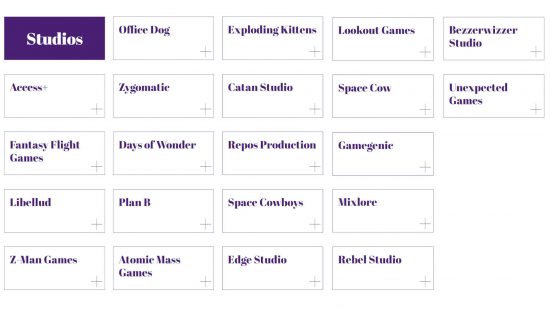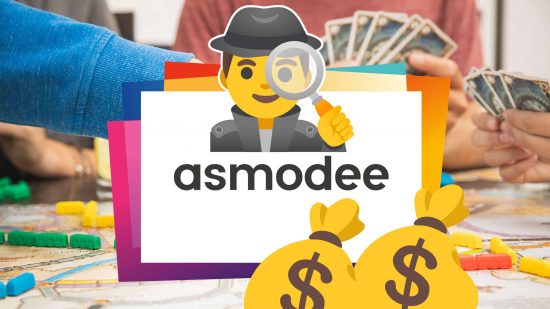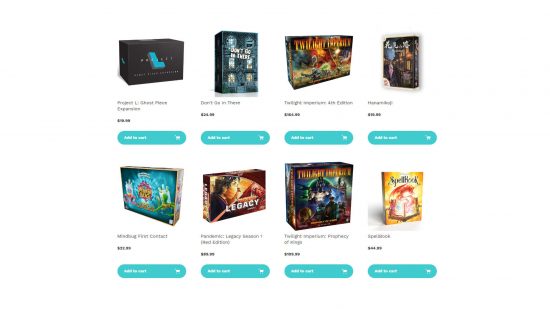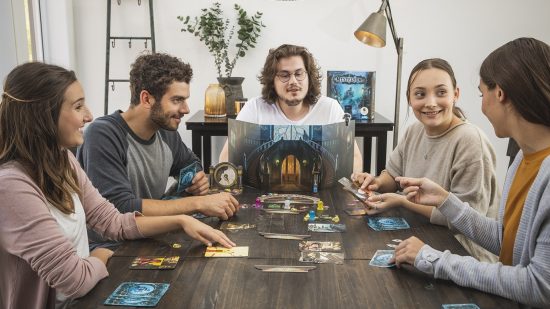We reported on April 22 that Asmodee, the tabletop publishing and distribution giant behind some of the biggest board games in the world, had been saddled with a $958 million (€900 million) loan by its owner, Embracer Group. We spoke to Lee Wild, Head of Equities Strategy at UK-based investment platform Interactive Investor, to get a better understanding of what this means for the board game industry.
Asmodee contains 23 creative studios, which collectively produce many of the biggest and best board games, from Ticket to Ride to Pandemic. It’s also the international distributor for many more, with 22 distribution offices around the globe. It’s an important part of the board game, TCG, RPG, and miniature game market, and any disruption to the firm could have far-reaching consequences.

Embracer Group spent $3 billion (€2.75 billion) acquiring Asmodee in March 2022, and just over two years later it will be setting it loose again. Embracer plans to split into three separate companies – Asmodee, ‘Coffee Stain & Friends’, and ‘Middle-earth Enterprises & Friends’ – each one listed separately on the stock market, and focused on a different segment of the business. The other two firms will go onto the market practically debt free – the massive new loan is tied exclusively to Asmodee’s assets.
Business debt isn’t the same as household debt: if you invest a loan into new equipment, staff, or premises for your business, the money made from those assets will hopefully be more than the money you lose paying interest. A business doesn’t even, necessarily, have to pay off the initial sum it borrows. If it proves that it’s in a good position to keep paying interest, future investors will lend them money to pay off the initial debt and replace it with a new one – it’s called ‘refinancing’.
This doesn’t mean that Asmodee is in a good position. While not able to comment on Asmodee’s prospects specifically, Lee Wild gave us a general overview of what a heavy debt burden means for any company. “Ideally, a company would not start life on any stock exchange saddled with a huge amount of debt”. The bigger its debts, the more of the firm’s income will go to paying interest on the loans. That’s a drag on the business.
“It’s far better to spend profit and cash flow on growing the business”, Wild notes. Money spent on interest payments cannot go towards inward investment in things like new technology, recruitment, staff development, or even pay rises. Tight belts may mean meagre salaries – and the board game industry is already not known for paying well – which may make it hard to attract and retain skilled employees. Over time this can degrade how the business performs.
If a company is starting its life with debt, Wild says “it should at least be manageable and there be a plan in place to reduce it over time”. That means not just making interest payments, but paying off the initial capital sums – which is tricky to do without surplus cash. So how much surplus cash does Asmodee generate?
It is certainly one of the most profitable parts of Embracer Group. In 2022-23’s financial report, Asmodee’s pre-tax earnings were $78 million (828 million SEK). The actual amount of free cash Asmodee generated was even higher, actually $180 million (2010 million SEK): that’s because, though Embracer has already paid the cash cost for purchasing Asmodee, it’s being accounted for across multiple financial years1.
Embracer’s interim results for the first three quarters of financial year 2023-24 suggest Asmodee is on track to beat its performance in the previous year, if only by a little. Embracer’s Head of Investor relations Oscar Erixon tells Wargamer this is sufficient for Asmodee to handle the new debt: “Asmodee is a business with strong cash flows that can manage a relatively high leverage”.
We noted in our initial report that Asmodee will leave Embracer with a net debt-to-EBITDA factor of 3.9x. In rough terms, this means that the firm’s debt is 3.9 times greater than its annual profits before accounting for interest, tax, amortization, and depreciation (the aforementioned accounting techniques that mean an asset paid for with cash in one year appears as a loss over multiple years’ accounts).
This degree of leverage is not an enviable position, Wild says: “a net debt-to-EBITDA ratio above three times makes it much harder for companies to pay down debt and improve their finances”.
Embracer apparently has plans in place to try and put Asmodee onto a good footing. Erixon states that before Asmodee and the other businesses separate, “the full capital structure will be reviewed… to create the best possible long-term foundation”.
‘Capital structure’ refers to all the major sources of cash for a business, which includes both debt and ‘equity’, the sale of shares in the company to shareholders. Wargamer can’t speculate what form the capital restructuring might take, and Erixon does not elaborate. Since a heavily indebted company doesn’t have the free cash to pay shareholders big dividends, we would expect Asmodee’s share price to suffer, making it hard to generate cash through issuing shares.
The new loan secured against Asmodee’s assets will ‘mature’ in eighteen months, at which point Asmodee will need to repay it in full. Paying down the whole thing in a year and a half is not feasible, so Asmodee must be able to demonstrate to current and future creditors that it can keep paying in order to refinance the loan.
Wild says that in general terms, “If debt gets out of control, they may be forced to cut costs or find ways to raise money – maybe selling assets”. After a planned funding deal at Embracer fell through in 2023, it sold off videogame firms Gearbox Software and Saber Interactive. Asmodee owns an enviable toybox of other tabletop companies, which could be sold off to other firms. And Embracer has already made redundancies across its portfolio, including at Asmodee, to service its previous loans.
Whatever the risks, some people clearly think this is a goer. The investors that provided Embracer with the loan – JP Morgan, BNP Paribas, SEB, Societe Generale, and Swedbank – either believe that Asmodee will be able to pay, or that acquiring the firm’s assets will be adequate recompense if it defaults on the loan.
Embracer’s press release states that “Shareholders representing more than 50 percent of the capital and votes in Embracer Group have expressed support for the transformation plan”. Current Embracer CEO Lars Wingefors, who owns 20% of the capital and 40% of the votes in Embracer, states in another press release “I intend to remain a long-term, active, committed and supportive owner of all three entities” – suggesting he’s willing to put his own money on the line.
Erixon states that: “To us, this is a positive move which will benefit gamers and fans around the world. The idea is that the three entities will be able to focus on executing their core strategies and leveraging their own strengths.”
That may be the case – this may indeed be the best, or only, way that the businesses within Embracer Group can continue effectively. But it seems clear that Asmodee, and through it the board game industry, will bear the brunt of any costs.

- When Embracer bought Asmodee, it added a lot of “intangible assets” to its balance sheet – millions of dollars worth of goodwill, intellectual property, and the unrealised potential of using Asmodee IPs in videogames. Each year those assets decrease in value, appearing on the books as a loss for that year, despite the fact the money left the company when the assets were acquired. This is standard accounting practise.





